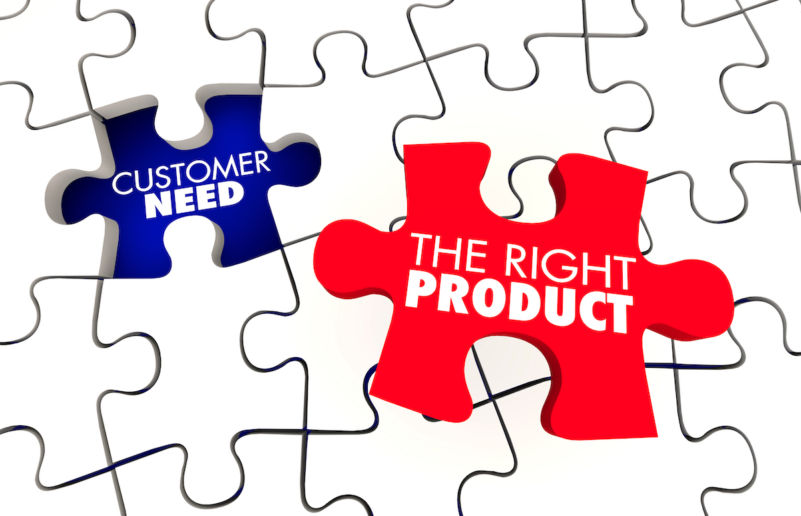Does your company tend to copy competitors? Maybe you piggyback on the tech that others have developed? That’s not unusual. We see this in many of the client businesses that we coach.
That’s all well and good, but if you want to grow fast, you need to differentiate. Last week’s blog explored the need for focus and depth on attributes. It’s so important to get under the skin of your core customers. And I mean, really get under their skin to understand their problem and how you can solve it uniquely. This is about building expertise to generate a higher margin than your competitors. If you have one, your competitive advantage will be reflected in these higher net margins over time.
Once you’ve done this, you need product marketers to create bespoke services or products that have your core customer at their heart. This is how you unlock powerful growth.
Balancing innovation with efficiency
All businesses need to navigate a continuum between innovation and efficiency. When I joined Peer 1 as their MD, it was clear they had never created bespoke services. They’d build a data centre using Dell servers, as they were a brand that customers knew and understood. Then they’d sell hosted services offering a particular combination of RAM, hard drive and processor.
But where were the product marketing people? Where was the evidence that they’d solved a problem for a core customer? There was no one there who could design a product or service at a particular price for a specific set of highly profitable customers.
Several of our clients have been value-added resellers and have morphed into MSPs. They’re in the same position. They’re operating at the efficiency end of the continuum. They’re selling boxed product made by someone else on a low margin. To make any money, they need to be super-efficient. No inventory, zero bad debt, payment in advance and then quick delivery. Yes – it’s an efficient model. But it won’t lead to rapid growth.
Commanding a premium

At the other end of the continuum, there’s innovation. And this is when you can start to charge a premium. By working through a Value Proposition Canvas, your product marketing specialists can define services or products that match your expertise.
Consulting businesses that specialise in cloud or digital transformation are good examples. Here, customers are paying for ideas. They’re saying, ‘I’d like a cloud operating model for our business. How much will that be?’ The model doesn’t exist yet, but the supplier can command a premium due to the expertise it offers.
Revenue is one of the measures we look at if it’s a high-margin business. Also, gross profit per FTE. Typically, undifferentiated service businesses deliver about £100K gross profit per FTE. Those that do better have some IP (Intellectual Property) in their business. They can command a premium because they’re selling a concept that’s based on their IP, or they’re selling ideas.
Solving problems for existing customers
To tap into stratospheric growth, you must sell new products or services to your existing customers. It’s way more cost-effective than selling existing products to new customers. You’ve already built trust through your relationship, so existing customers are much more likely to buy something from you, even if you haven’t yet worked out what it is!
This was how we scaled Rackspace and Peer 1 from zero to £30 million in five years. By understanding the needs of our core customers, providing outstanding service and selling more to them. At Peer 1, our core 500 customers, spending $10k per month or more per month, grew at 4% gross per month, on average.
Once you have a handle on your core customer, you can work out how you solve more problems for them. You might have a product and want to wrap a service around it. Let’s say you’re a value-added reseller selling a range of printers. You have a portfolio that covers your core customers’ printing needs. But you want to move into providing more services to them.
Get your product marketing team to do some client discovery work. Take a core customer spending a significant sum of money on print. Work out what they spend this money on by doing an audit. This can be a chargeable service that you’ve defined.
Having worked through the Value Proposition Canvas, you might decide you want to put software on this customer’s network. Because all the printers are in random locations, the software can tell you when they’ve run out of ink and schedule one of your engineers to visit. Then the customer’s staff will never complain that their printers are down.
Introducing subscriptions for recurring revenue
The example I’ve given above is still focused on topping and tailing a product sale. But the holy grail of product marketing is to move towards a subscription service. Then you’re bringing in recurring revenue. Bam! Suddenly you’ve got a business worth twice as much as it was when it was product-based in terms of multiples.
Going back to my example. As CEO of the print business, you could decide to offer a managed print service. Instead of providing hardware, suggest the customer pays a subscription for print. This could go up and down depending on the number of offices, people and quantities involved. You work out what printers to buy, where they’re put and how you manage and service them.
You get there by looking at the customer’s problem. Does the printing need to be fast? Do they need binding or stapling? What about scanning? And a document management solution? Select everything the customer needs and take them through a process of understanding what this looks like. If it’s a subscription, they can change their minds later. You can add functionality. Upgrade or downgrade. Pay a fixed monthly fee that can be adjusted according to use.
Any business can be subscription-based
There’s a great book on this topic called ‘Subscribed’. The authors Tien Tzuo and Gabe Weisert liked to play a parlour game. Over a couple of beers, they’d try to think of any business they couldn’t turn into a subscription model. They’ve yet to come up with one!
They describe their work for Komatsu, the company that built the world’s largest bulldozer. Before, Komatsu sold these huge machines or rented them out with a driver. But now they have a subscription service based on the amount of earth that needs to be moved.
Komatsu sends in a drone, takes an aerial survey and works out the most cost-effective way of digging the hole. If you’re a customer building multiple tower blocks and buildings, you can subscribe to this service wherever needed. And they take care of the whole process. Brilliant!
Written by business coach and leadership coaching expert Dominic Monkhouse. Contact him to schedule a call here. You can order your free copy of his book, Mind Your F**king Business here.

